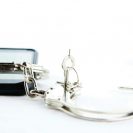Hello DJs! Following up from part 2 of ‘The Art Of DJing’ in November, now that we have covered the all-important task of finding equipment, it’s time to do what DJ’s do best-start playing music.
DJ’s have many different ways of playing music. For example, dance music DJ’s will usually mix tracks together in one continuous set, bringing one track after another with as little disruption to the flow as possible. Hip-Hop DJ’s do a similar thing but include a lot of technical skills like scratching and beat juggling.
Pop DJ’s (or wedding/radio DJ’s) will simply play one song after another with minimal mixing effort. Then you have turntablists who are a whole other level of DJing and technical skills…not something I personally can do but they are amazing to watch. For an extreme example of what these guys do, go look online for a DJ called Mr Tape…the true epitome of DJing and its roots.
You might already have an idea of what you’d like to do when it comes to DJing; maybe you love a certain genre and simply want to do what your favorite DJs do. Or maybe it’s just that you love music so much that you have to DJ by any means, and you’ll figure it out along the way. The main thing is, despite what some music snobs might say, there is no wrong music, no wrong way to play, and no set template; play what you love, how you love, and develop your own style.
By the same token, imitation is the sincerest form of flattery, so copy your favorite DJs if that’s what you want. You can even recreate their best sets, track for track-the only rule you need to follow when DJing is to HAVE FUN (that’s what it’s all about!). If you’re a house DJ, it doesn’t mean that’s all you can/should play-drop in some dubstep if that’s your bag too. If you like rock music and drum and bass-bring them together in a mix!
People often ask me how I learnt, or who taught me. This was all pre-internet so I had to teach myself. I’d been listening to mix tapes of the big rave DJs, which is what made me want to start myself, so I had an idea of what I wanted to do. I found out what equipment I’d need to start mixing, and luckily found somebody selling theirs locally. Once I got it all home, and brought a few records, I’d play a record and experiment with every button and lever on the turntable to see what it did. If I found something I wasn’t sure about, I’d be sure to ask the expert in my local record shop during my next visit.
Once I understood the full working of the turntable, I did the same with the mixer, playing with every switch and fader in sight until I knew what each one did. Soon I understood how to fade from the music playing on the left turntable to the music on the right one, and I knew how to cut or increase volume, bass and treble in each track. I was halfway there!
Once I had these steps down, I figured out how to mix. Since I understood by this point that sliding the pitch controls on the turntables changed the speed, sliding up to slow it down and sliding down to speed it up, that I needed the speed of each record to be the same in order for the beats to match in time.
https://www.instagram.com/p/BnwRif9ly1s/
The whole process from buying the equipment to eventually getting two tracks to play together in time took a few months. The first time you get two records to mix at the same speed without clashing is, to music heads, one of the best feelings in the world, and something you’ll never forget.
It would be more difficult today for new beginners in that hardware now has much more to it, more features and so much to look at. On the plus side, access to tutorials online is as simple as picking your phone up. There are some great videos online that talk you through the basics, however I’d definitely advise that you try and do all you can alone and without help before checking them out. Not only is this the best way to get a full understanding of each piece of the puzzle, but you’ll also feel a great sense of achievement as you progress.
So until you pick up some skills on your own equipment, start with the bare minimum by finding out how to get a track to play. As the music is playing, mess around and play with each button, switch and fader to see what happens; music will speed up and slow down, start and stop, get higher and lower in pitch, volume will increase and decrease, and much more. By practicing you’ll quickly find out what everything does and, eventually, how that all fits into bringing a mix together.
The next step is to learn about beats and bars, something that I find tricky to explain in writing but I will try my best, using dance music as the example. The 4 beat rule applies to most music though so hopefully fans of other genres can still follow below.
Any veteran DJ will tell you that, even while not DJing, when they hear a song, most of the time they will be automatically counting in their head ‘’1, 2, 3, 4’’ in time with the music. A lot of DJ’s even do that with day to day things too; the sound of a car indicator, somebody drilling into a wall next door, the sound of a phone ringing…it’s just how we’re programed!
We do this because when mixing, we’re constantly keeping track of the music that’s playing so that we know when we should bring the next track in. A track is made of various sections. For example, if you take an average dance track it starts with a simple buildup of just a kick drum for the intro, after some time you will find some percussion included, a short while later some strings and so on.
https://www.instagram.com/p/BpB-jxxhPeW/
Each of those sections are made in multiples of 4 beats; if the intro kick drum plays for 16 beats before the percussion comes in, that’s 4 lots of 4 beats. 4 is the magic number.
Ideally, you want to start your mixes at the end of a 4 beat sequence. So just picture the above mentioned dance type track now playing from the very beginning. Each thump of the drum is one beat:
*thump, thump, thump, thump* (4 beats) *thump thump thump thump* (4 beats) *thump thump thump thump* (4 beats) *thump thump thump thump* (4 beats).
You could bring your next track in after any of those sets of 4 beats. The best time is to start when you know a change in the track is coming. So using the above example, after the 16 thumps is when the percussion would start (this would be a change in the track and a nice time to start mixing).
Depending on the tunes you’re playing depends on the best time to mix into them. For example, if you have a vocal house track playing and the vocals have just started, you wouldn’t then bring another vocal track into the mix otherwise you’ll end up with two different vocalists playing over each other. There are infinite possibilities because of the dependence on what you’re playing, as well as your own preferences.
This is where, as mentioned in last month’s article, it’s essential you learn the tracks you’re playing so that you know when to end a track and start another. You don’t need any beat matching or technical skills if you can learn the tracks. I fully appreciate that my explanation may not be the best so do go online and check out videos on the matter! But at least know that it is important to learn and know about the 4 beat system.
Tip: Once you’ve learnt your equipment, and want to start figuring out how to mix, play the same track on both decks. Because it’s the same track, the BPM (beats per minute), the key and the structure will be the same on both decks and it will simply be a matter of trying to get the song to meet in time without figuring out the pitch and layout.
So with that, everything here is really what you ought to focus on for the beginning. Practice is the key here, and it will take time to learn (even longer to master), but as long as you love what you’re doing you’ll enjoy the whole journey. Next time we will have a look at how to get started planning sets, playing out and more.
If you have any questions, or want advice when it comes to anything in this series of articles, mixing, equipment or anything else to do with DJing, you can hit me up on Instagram @timmybdj.
Featured image from Pexels.
Part 1:
Part 2:










